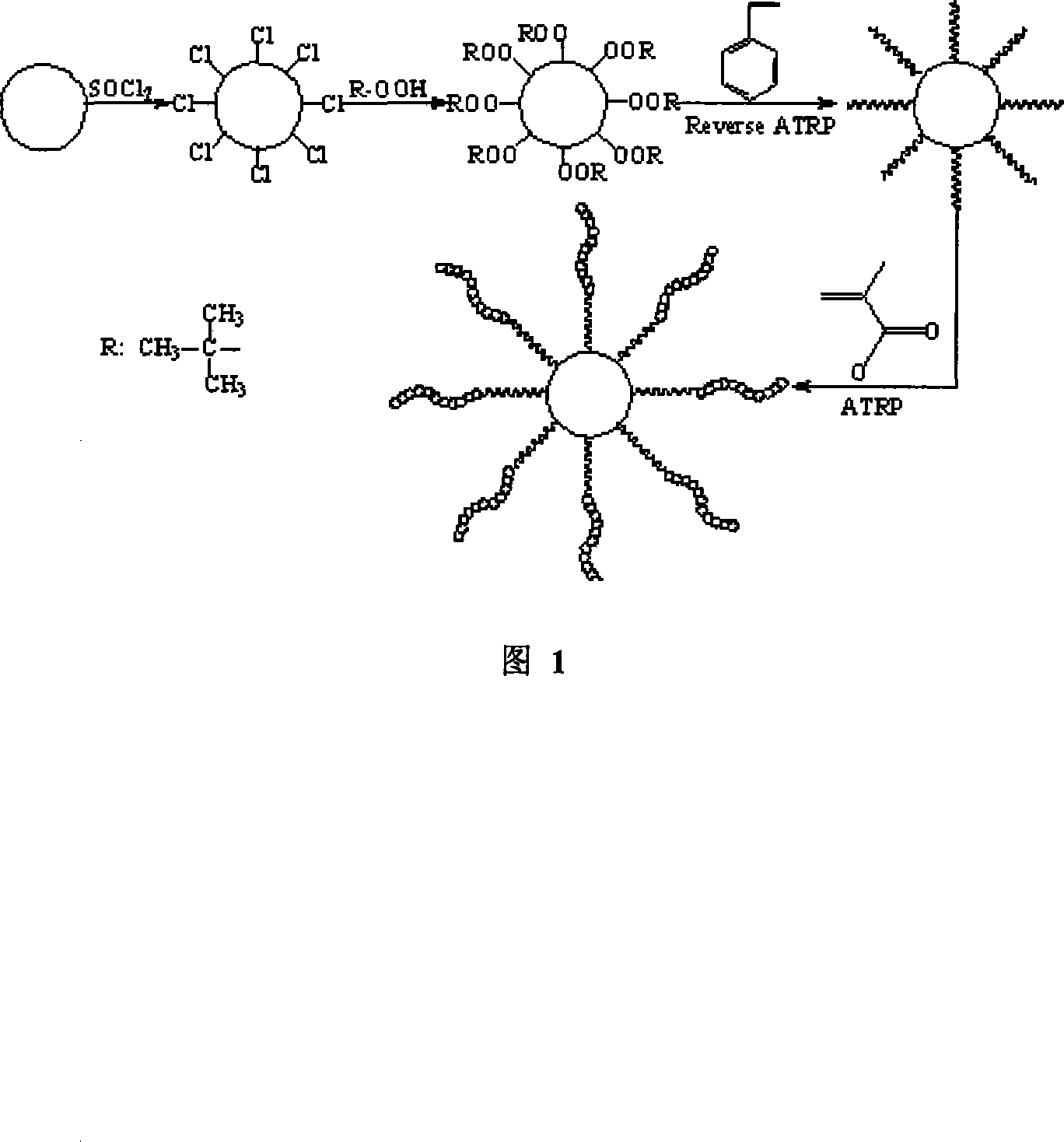Nano particle surface modifying method
A nanoparticle and surface modification technology, which is applied in the treatment of dyed low molecular weight organic compounds and dyed high molecular organic compounds, etc., can solve the problems of difficult synthesis and difficult industrial production, and achieve easy availability of raw materials, improved dispersibility and stability. sexual effect
- Summary
- Abstract
- Description
- Claims
- Application Information
AI Technical Summary
Problems solved by technology
Method used
Image
Examples
Embodiment 1
[0031] Reagents used
[0032] Methyl methacrylate (MMA), styrene (St): wash with 10% NaOH solution before use, dry over anhydrous sodium sulfate, distill and refine under reduced pressure and store at low temperature.
[0033] CuCl 2 ·6H 2 O removes water of crystallization by reacting with thionyl chloride.
[0034] Cuprous chloride (CuCl): wash with 10% acetic acid solution three times, then wash with acetone of analytical grade until the pH is between 4 and 7, and dry in vacuum at room temperature for 24 hours in the dark.
[0035] 2,2,-bipyridine (bipy): purified by recrystallization from acetone.
[0036] 2,2,6,6-Tetramethyl-1-piperidine oxynitride (TEMPO).
[0037] 1,4-Dioxane: purified twice by distillation before use.
[0038] Thionyl chloride (SOCl 2 ), tert-butyl hydroperoxide (TBHP)
[0039] Tetrahydrofuran (THF), Xylene, Chloroform, Toluene, Methanol
[0040] 2 Chlorination of hydroxyl groups on the surface of nanoparticles
[0041] Add the nanoparticles int...
PUM
 Login to View More
Login to View More Abstract
Description
Claims
Application Information
 Login to View More
Login to View More - R&D
- Intellectual Property
- Life Sciences
- Materials
- Tech Scout
- Unparalleled Data Quality
- Higher Quality Content
- 60% Fewer Hallucinations
Browse by: Latest US Patents, China's latest patents, Technical Efficacy Thesaurus, Application Domain, Technology Topic, Popular Technical Reports.
© 2025 PatSnap. All rights reserved.Legal|Privacy policy|Modern Slavery Act Transparency Statement|Sitemap|About US| Contact US: help@patsnap.com

